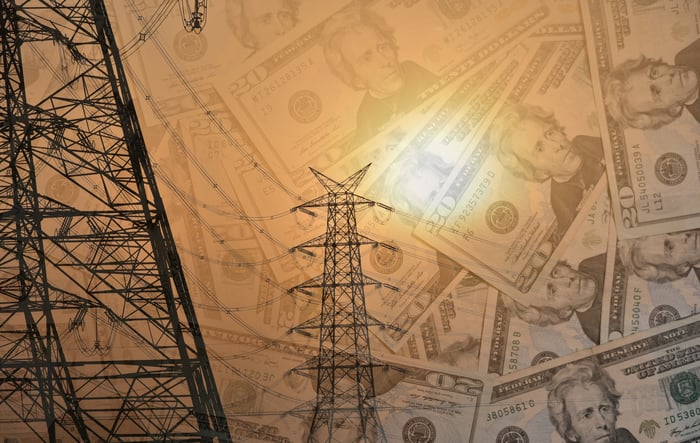Global infrastructure giant Brookfield Infrastructure Partners (BIP -1.74%) has grown at a brisk pace over the past decade. Cash flow, for example, has expanded by a 21% compound annual growth rate, which has helped fuel 12% compound annual growth in the distribution it pays out to investors, helping push its yield to an attractive 4%. One of the primary fuels of this growth has been the company's ability to buy infrastructure assets at fantastic prices.
That said, the company wouldn't have been able to take advantage of these golden opportunities if it didn't previously cash in on other businesses so it would have the money to replace them with even better ones. That's why investors should be excited by what the future holds since it recently announced a significant asset sale, which could help accelerate its growth rate in the coming years.

Image source: Getty Images.
A history of making great trades
Over the past eight years, Brookfield Infrastructure Partners has sold 10 businesses for a total of $2 billion. On average, it has earned a 25% internal rate of return on these sales, which is a testament to its ability to buy low and sell higher.
The company has gone on to use this cash to buy businesses that generate even better returns. For example, in 2016, it sold Great Lakes Power Transmission to Hydro One Limited (H -0.21%) for $222 million in cash plus the assumption of $151 million in debt. That was a pretty hefty price for Hydro One to pay given that Great Lakes' rate base was $219 million, which is the economic value of the property that it can use to earn a return specified by regulators. At that price, it implied that Brookfield was only making a mid-single-digit return on the investment.
Brookfield would go on to reinvest the cash from that sale to help it acquire a natural gas pipeline business in Brazil as well as invest in some electricity transmission line projects in that country. Those new additions should generate returns of 12% to 14%, making them an exceptional upgrade from the business it sold. In fact, the natural gas pipeline acquisition alone helped power a nearly 70% jump in cash flow from Brookfield's utilities segment in the last two quarters. That high growth rate is one of the reasons why the company was able to increase shareholder distributions by 11% in 2017.

Image source: Getty Images.
Refueling for the next phase of growth
Brookfield Infrastructure recently took the next step in its portfolio refreshment by selling its 27.8% stake in Transelec, which is an electricity transmission business in Chile, for $1.3 billion. That price represents a sizable return on investment considering that Brookfield's parent initially bought a 92% stake in Transelec for $1.55 billion in 2006.
That cash infusion will give Brookfield the money to "fund our growing backlog of organic growth projects, as well as our robust pipeline of transactions," according to CEO Sam Pollock. In fact, the company currently has $2.3 billion of internal expansion projects underway and is working on securing another $1.5 billion in development projects. These expansions can earn the company very lucrative returns. For example, Brookfield is currently working to lock up $300 million of expansion projects on its U.S. natural gas pipeline joint venture, which would generate an estimated $45 million in annual earnings.
In addition to earning high returns by expanding its existing businesses, Brookfield is also looking to expand its portfolio into areas where it sees more growth potential. Water, smart cities, data, and Asia are all spaces where the company believes it can generate high-return growth in the coming years. While it could take some time to find the right opportunities, once it does, those new additions should propel cash flow higher, giving it more money to distribute to investors.
A big-time yield with even bigger growth potential
While many attribute Brookfield Infrastructure's growth to its ability to buy low, the company wouldn't have been as successful if it hadn't also done an exceptional job of selling high. It recently did just that by cashing in on its investment in Transelec. Though that deal will have an impact on cash flow in the near term, it could prove to be an accelerant once the company reinvests the money into higher-returning opportunities. As those investments start paying dividends, Brookfield Infrastructure could grow its already lucrative distribution to shareholders by a faster pace than the 5% to 9% annual rate it can currently deliver from its existing portfolio.





